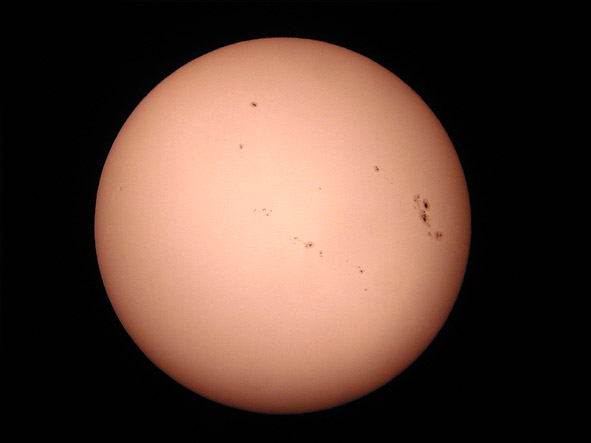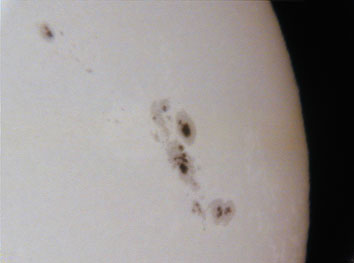
 |
| Date & Time: | Apr 1 2001, 10:58 JST(+0900), 1/500sec. Exp. |
| Optical: | TAKAHASHI 12.5cm(4.9") fluorite refractor, afocal method with LV25mm eyepiece |
| Stopped down to 5cm(2"), with two ND400 filters | |
| Synthesized focal length f=460mm (equivalent f=2465mm in 35mm film format) | |
| Auto-guided with GOTO MX-II Equatorial | |
| Digital Camera: | OLYMPUS C-2020Z |
| Location: | Ooizumi vil., Yamanashi pref. |
| Camera Settings: | Mode.....SHQ (1600 x 1200, high-quality JPEG format) |
| Lens.....f=11.5mm (equivalent f=60mm in 35mm film format), Stop: F2.2 | |
| CCD sensitivity.....ISO100, White Balance.....Auto |
 |
Close-up image of sunspot group The detailed structure of naked eye sunspots near the wester edge of the surface of Sun. (afocal method with LV12mm eyepiece, Synthesized focal length f=1592mm, with ND400 filter) |
| Warning:
When using a telescope for observing or photographing the sun, lacking knowledge of proper solar filtering methods can pose risks of visual impairment or blindness. I do not assume any responsibility for any accidents that may occur as a result of observing or photographing the sun through this site. |
Change of Solar surface in Jun 2007 |
The Sun |
| Copyright(c) 2001 by Naoyuki Kurita, All rights reserved. | ||
| To top page | To Moon&Planets index |